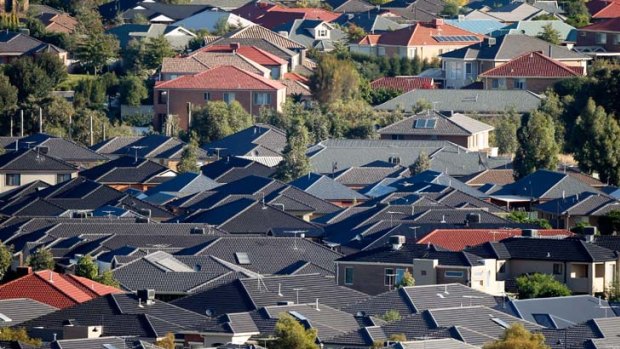This was published 11 years ago
Nation of loss-making landlords
By Leith Van Onselen
The Australian Taxation Office (ATO) has released its Taxation Statistics for the 2009-10 financial year, which once again revealed that Australia is a nation of loss-making landlords.
According to the ATO, there were 1,751,679 property investors declared to the ATO in 2009-10 - representing one in seven taxpayers - an increase of 59,235 from the 2008-09 financial year.

The risk of widespread selling of investment properties is likely to intensify.Credit: Paul Rovere
Total losses on investment properties were $4.810 billion in 2009-10, or $2746 per property investor, down from $6.528 billion ($3857 per investor) in 2008-09.
Of the 1,751,679 property investors recorded by the ATO in 2009-10, 63% or 1,110,922 were "negatively geared", meaning that holding costs (eg, interest payments, maintenance, and other costs) outweighed income from rents.
Of these negatively geared investors, nearly three-quarters earned less than $80,000 in 2009-10, and the average loss was $9132 per negatively geared investor, or $176 per week.
Not only are investment property holdings In Australia concentrated in lower-to-middle income groups, but also older age cohorts.
According to the 2009-10 Australian Bureau of Statistics (ABS) Household Wealth and Wealth Distribution, nearly three-quarters of Australia’s investment properties by value were held by individuals aged 45 and over, with Australia’s Baby Boomer generation (45 to 64 years-old in 2009-10) holding just over 55 per cent of these homes.
Risk of widespread selling rising
The concentration of negatively geared properties in lower income and older age cohorts has potentially important ramifications for the Australian housing market.
First, negative gearing is only attractive as a tax minimisation strategy when there is labour income to offset rental losses against. However, once an investor enters retirement and ceases working, they lose the ability to offset losses for taxation purposes, and negatively geared property investment loses its attractiveness.
Second, once somebody enters retirement, they tend to become more risk-averse and more concerned with achieving a stable flow of income rather than potential capital growth. Retirees with inadequate income are also more likely to become net sellers of property (as well as financial assets) in order to generate the funds necessary to maintain their standard of living in retirement.
With the oldest Baby Boomers having turned 65 in 2011, the large migration into retirement in Australia has already officially begun, and will only gain strength throughout the decade as more and more Baby Boomers exit the workforce.
Logically, therefore, the incentive to unwind property holdings would be greatest amongst the lower-to-middle income earners and the older age cohorts that hold the bulk of Australia’s negatively geared investment properties.
In addition, the risk of widespread selling of investment properties is likely to intensify once Australia’s 1.1 million negatively geared investors come to the realisation that there is little prospect of a resumption of past strong rates of capital growth and they are stuck with a loss-making investment.
With the release of these figures by the ATO, the big question remains: with Australian housing values down over 5 per cent since 2009-10, and with the outlook for capital growth subdued, will Australia’s 825,000 middle to lower income earners continue pay their property a dividend in the hope that it repays them with capital growth?
Leith Van Onselen is an economist who has previously held positions at the Australian and Victorian Treasury and Goldman Sachs. This is an extract from a report on negative gearing available free at MacroBusiness.